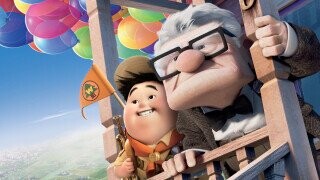22 Rules of Storytelling Pixar Follows in their Movies

When Toy Story hit movie theaters in 1995, it reached for the sky towards infinity and beyond. Not only was it the first fully computer animated feature film, it was the first feature film that Pixar had ever released. It was a big risk and it paid off, both in terms of creative fulfillment in filmmaking and in terms of box office receipts.
Ever since, aside from a handful of mediocre-at-best films, the vast majority of Pixar movies are commercial and critical successes. Aside from using computer animation to its fullest potential and somehow re-perfecting it film after film since 1995, the biggest secret to Pixar’s success is how they tell their stories. If you have studied Pixar’s film library, you probably have noticed certain story paths, patterns, and themes that have become a part of its usually-successful narrative formula.
After years of presumption and theory, a Pixar storyboard artist, Emma Coats, shared with the public 22 tips, secrets, and techniques that Pixar implements into creating their stories. Here they are.
Essence

Source: Emma Coats/Twitter
Identify

Source: Emma Coats/Twitter
Movies You Dislike

Sources: Emma Coats/Twitter, Den of Geek
Coincidences

Sources: Emma Coats/Twitter, Fairy Godmother/YouTube
No Fussing

Sources: Emma Coats/Twitter, Den of Geek
Pixar

Sources: Emma Coats/Twitter, Den of Geek
Pixar

Source: Emma Coats/Twitter
Honesty

Sources: Emma Coats/Twitter, FritzSG1/YouTube
Your Belief

Sources: Emma Coats/Twitter, ComingSoon.net
Characters' Opinions

Source: Emma Coats/Twitter
Keep Digging

Sources: Emma Coats/Twitter, Den Of Geek
Put It On Paper

Sources: Emma Coats/Twitter, Lad Bible
Stories You Like

Sources: Emma Coats/Twitter, Decider
What Wouldn't Happen?

Source: Emma Coats/Twitter
Finish and Let Go

Sources: Emma Coats/Twitter, Animated Views
Ending

Source: Emma Coats/Twitter
Opposites

Source: Emma Coats/Twitter
Simplify

Sources: Emma Coats/Twitter, Axion Digital Hues/YouTube
Once Upon a Time...

Source: Emma Coats
Toy Story

Sources: Emma Coats/Twitter, Screen Rant
Think of Your Audience

Sources: Emma Coats/Twitter, Rotten Tomatoes
More: 6 Movies Aimed At Kids (With Scenes That Definitely Weren't)
Trying Hard

Source: Emma Coats/Twitter